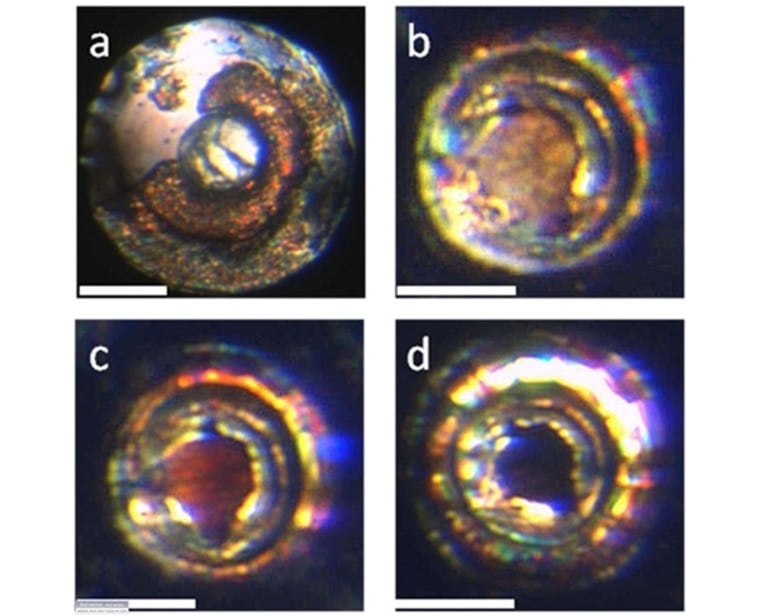Using super-high pressures similar to those found deep in the Earth or on a giant planet, researchers have created a compact, never-before-seen material capable of storing vast amounts of energy.
To create this material, researchers crushed xenon difluoride — a white crystal used to etch silicon conductors — between two small diamond anvils. A so-called diamond anvil cell is a small device just a few inches in diameter capable of producing extremely high pressures in an even smaller space.
Though the research is just at a basic science level for now, the findings shows it is possible to infuse mechanical energy into a material via extremely strong chemical bonds.
"It is the most condensed form of energy storage outside of nuclear energy," says Choong-Shik Yoo, a professor of chemistry at Washington State University and lead author of the paper published in a recent issue of the journal Nature Chemistry.
Squeeze play
At normal atmospheric pressure, molecules of xenon difluoride stay relatively far apart from each other. As researchers increased the pressure on the xenon difluoride inside the diamond anvil cell chamber, the material became a two-dimensional graphite-like semiconductor.
The researchers eventually increased the pressure to more than a million atmospheres, which is comparable to the pressure found halfway to the center of the Earth. All this "squeezing," as Yoo called it, forces the molecules to make tightly bound three-dimensional metallic "network structures."
Ultimately, the huge amount of mechanical energy of compression was stored as chemical energy in the molecules' bonds.
Boom boom power
Releasing all this energy would be easy, though perhaps a bit dangerous on a large scale. As reported by Technology Review, perturbing a single atom in the compressed xenon difluoride would cause the whole metalized substance to explode. And xenon difluoride packs a punch, with about 20 percent of the energy density of HMX, a very powerful military and industrial explosive, according to Yoo.
Of course, before ever seeing service in useful quantities outside the lab, scientists will need to introduce impurities to make the squished xenon difluoride "metastable," rather like the ubiquitous, combustible fossil fuels we familiarly call plastics, according to Technology Review.
Once that is sorted out, possible future applications of pressurized xenon difluoride include creating a new class of energetic materials or fuels as well as an energy storage device akin to a battery. The new substance could also lead to super-oxidizing materials for destroying chemical and biological agents, and possibly high-temperature superconductors.
• Tiny Nuclear Batteries to Power Micro Devices
• New Spraying Technique Could Lead to More Powerful Batteries
• 10 Profound Innovations Ahead
